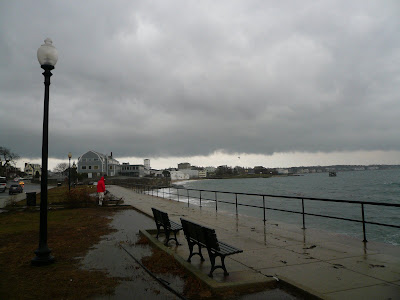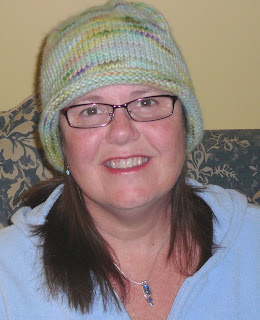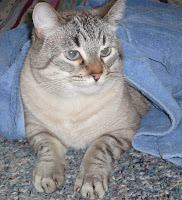December 7, 2008
100 Notable Books of 2008The Book Review has selected this list from books reviewed since Dec. 2, 2007, when we published our previous Notables list.
Fiction & PoetryAMERICAN WIFE. By Curtis Sittenfeld. (Random House, $26.) The life of this novel’s heroine — a first lady who comes to realize, at the height of the Iraq war, that she has compromised her youthful ideals — is conspicuously modeled on that of Laura Bush.
ATMOSPHERIC DISTURBANCES. By Rivka Galchen. (Farrar, Straus & Giroux, $24.) The psychiatrist-narrator of this brainy, whimsical first novel believes that his beautiful, much-younger Argentine wife has been replaced by an exact double.
BASS CATHEDRAL. By Nathaniel Mackey. (New Directions, paper, $16.95.) Mackey’s fictive world is an insular one of musicians composing, playing and talking jazz in the private language of their art.
BEAUTIFUL CHILDREN. By Charles Bock. (Random House, $25.) This bravura first novel, set against a corruptly compelling Las Vegas landscape, revolves around the disappearance of a surly 12-year-old boy.
BEIJING COMA. By Ma Jian. Translated by Flora Drew. (Farrar, Straus & Giroux, $27.50.) Ma’s novel, an important political statement, looks at China through the life of a dissident paralyzed at Tiananmen Square.
A BETTER ANGEL: Stories. By Chris Adrian. (Farrar, Straus & Giroux, $23.) For Adrian — who is both a pediatrician and a divinity student — illness and a heightened spiritual state are closely related conditions.
BLACK FLIES. By Shannon Burke. (Soft Skull, paper, $14.95.) A rookie paramedic in New York City is overwhelmed by the horrors of his job in this arresting, confrontational novel, informed by Burke’s five years of experience on city ambulances.
THE BLUE STAR. By Tony Earley. (Little, Brown, $23.99.) The caring, thoughtful hero of Earley’s engrossing first novel, “Jim the Boy,” is now 17 and confronting not only the eternal turmoil of love, but also venality and the frightening calls of duty and war.
THE BOAT. By Nam Le. (Knopf, $22.95.) In the opening story of Le’s first collection, a blocked writer succumbs to the easy temptations of “ethnic lit.”
BREATH. By Tim Winton. (Farrar, Straus & Giroux, $23.) Surfing offers this darkly exhilarating novel’s protagonist an escape from a drab Australian town.
DANGEROUS LAUGHTER: Thirteen Stories. By Steven Millhauser. (Knopf, $24.) In his latest collection, Millhauser advances his chosen themes — the slippery self, the power of hysterical young people — with even more confidence and power than before.
DEAR AMERICAN AIRLINES. By Jonathan Miles. (Houghton Mifflin, $22.) Miles’s fine first novel takes the form of a letter from a stranded traveler, his life a compilation of regrets, who uses the time to digress on an impressive array of cultural issues, large and small.
DIARY OF A BAD YEAR. By J. M. Coet zee. (Viking, $24.95.) Coetzee follows the late career of one Señor C, who, like Coetzee himself, is a South African writer transplanted to Australia and the author of a novel titled “Waiting for the Barbarians.”
DICTATION: A Quartet. By Cynthia Ozick. (Houghton Mifflin, $24.) In the title story of this expertly turned collection, Henry James and Joseph Conrad embody Ozick’s polarity of art and ardor.
ELEGY: Poems. By Mary Jo Bang. (Graywolf, $20.) Grief is converted into art in this bleak, forthright collection, centered on the death of the poet’s son.
THE ENGLISH MAJOR. By Jim Harrison. (Grove, $24.) A 60-year-old cherry farmer and former English teacher — an inversion of the classic Harrison hero — sets out on a trip west after being dumped by his wife.
FANON. By John Edgar Wideman. (Houghton Mifflin, $24.) Wideman’s novel — raw and astringent, yet with a high literary polish — explores the life of the psychiatrist and revolutionary Frantz Fanon.
THE FINDER. By Colin Harrison. (Sarah Crichton/Farrar, Straus & Giroux, $25.) A New York thriller, played out against the nasty world of global capitalism.
FINE JUST THE WAY IT IS: Wyoming Stories 3 . By Annie Proulx. (Scribner, $25.) These rich, bleak stories offer an American West in which the natural elements are murderous and folks aren’t much better.
THE GOOD THIEF . By Hannah Tinti. (Dial, $25.) In Tinti’s first novel, set in mid-19th-century New England, a con man teaches an orphan the art of the lie.
HALF OF THE WORLD IN LIGHT: New and Selected Poems. By Juan Felipe Herrera. (University of Arizona, paper, $24.95.) Herrera, known for portrayals of Chicano life, is unpredictable and wildly inventive.
HIS ILLEGAL SELF. By Peter Carey. (Knopf, $25.) In this enthralling novel, a boy goes underground with a defiant hippie indulging her maternal urge.
HOME. By Marilynne Robinson. (Farrar, Straus & Giroux, $25.) Revisiting the events of her novel “Gilead” from another perspective, Robinson has written an anguished pastoral, at once bitter and joyful.
INDIGNATION. By Philip Roth. (Houghton Mifflin, $26.) Marcus Messner is a sophomore at a small, conservative Ohio college at the time of the Korean War. The novel he narrates, like Roth’s last two, is ruthlessly economical and relentlessly deathbound.
THE LAZARUS PROJECT. By Aleksandar Hemon. (Riverhead, $24.95.) This novel’s despairing immigrant protagonist becomes intrigued with the real-life killing of a presumed anarchist in Chicago in 1908.
LEGEND OF A SUICIDE. By David Vann. (University of Massachusetts, $24.95.) In his first story collection, Vann leads the reader to vital places while exorcizing demons born from the suicide of his father.
LIFE CLASS. By Pat Barker. (Doubleday, $23.95.) Barker’s new novel, about a group of British artists overtaken by World War I, concentrates more on the turmoil of love than on the trauma of war.
LUSH LIFE. By Richard Price. (Farrar, Straus & Giroux, $26.) Chandler — and Bellow, too — peeps out from Price’s novel, in which an aspiring writer cum restaurant manager, mugged in the gentrifying Lower East Side of Manhattan, himself becomes a suspect.
A MERCY. By Toni Morrison. (Knopf, $23.95.) Summoning voices from the 17th century, Morrison performs her deepest excavation yet into America’s history and exhumes the country’s twin original sins: the importation of African slaves and the near extermination of Native Americans.
MODERN LIFE: Poems . By Matthea Harvey. (Graywolf, paper, $14.) Harvey is willing to take risks, and her reward is that richest, rarest thing, genuine poetry.
A MOST WANTED MAN . By John le Carré. (Scribner, $28.) This powerful novel, centered on a half-Russian, half-Chechen, half-crazy fugitive in Germany, swims with operatives whose desperation to avert another 9/11 provokes a slow- burning fire in every line.
MY REVOLUTIONS. By Hari Kunzru. (Dutton, $25.95.) Kunzru’s third novel is an extraordinary autumnal depiction of a failed ’60s radical.
NETHERLAND. By Joseph O’Neill. (Pantheon, $23.95.) In the wittiest, angriest, most exacting and most desolate work of fiction yet about post-9/11 New York and London, the game of cricket provides solace to a man whose family disintegrates after the attacks.
OPAL SUNSET: Selected Poems, 1958-2008. By Clive James. (Norton, $25.95.) James, a staunch formalist, is firmly situated in the sociable, plain-spoken tradition that runs from Auden through Larkin.
THE OTHER. By David Guterson. (Knopf, $24.95.) In this novel from the author of “Snow Falling on Cedars,” a schoolteacher nourishes a friendship with a privileged recluse.
OUR STORY BEGINS: New and Selected Stories. By Tobias Wolff. (Knopf, $26.95.) Some of Wolff’s best work is concentrated here, revealing his gift for evoking the breadth of American experience.
THE ROAD HOME. By Rose Tremain. (Little, Brown, $24.99.) A widowed Russian emigrant, fearfully navigating the strange city of London, learns that his home village is about to be inundated.
THE SACRED BOOK OF THE WEREWOLF. By Victor Pelevin. Translated by Andrew Bromfield. (Viking, $25.95.) A supernatural call girl narrates Pelevin’s satirical allegory of post-Soviet, post-9/11 Russia.
THE SCHOOL ON HEART’S CONTENT ROAD. By Carolyn Chute. (Atlantic Monthly, $24.) In Chute’s first novel in nearly 10 years, disparate characters cluster around an off-the-grid communal settlement.
SIR GAWAIN AND THE GREEN KNIGHT: A New Verse Translation. By Simon Armitage. (Norton, $25.95.) One of the eerie, exuberant joys of Middle English poetry, in an alliterative rendering that captures the original’s drive, dialect and landscape.
SLEEPING IT OFF IN RAPID CITY: Poems, New and Selected. By August Kleinzahler. (Farrar, Straus & Giroux, $26.) Kleinzahler seeks the true heart of places, whether repellent, beautiful or both at once.
TELEX FROM CUBA. By Rachel Kushner. (Scribner, $25.) In this multilayered first novel, inter national drifters try to bury pasts that include murder, adultery and neurotic meltdown, even as the Castro brothers gather revolutionaries in the hills.
2666. By Roberto Bolaño. Translated by Natasha Wimmer. (Farrar, Straus & Giroux, cloth and paper, $30.) The five autonomous sections of this posthumously published novel interlock to form an astonishing whole, a supreme capstone to Bolaño’s vaulting ambition.
UNACCUSTOMED EARTH. By Jhumpa Lahiri. (Knopf, $25.) In eight sensitive stories, Lahiri evokes the anxiety, excitement and transformations felt by Bengali immigrants and their American children.
THE UNFORTUNATES. By B. S. Johnson. (New Directions, $24.95.) This novel, first published in 1969, dovetails theme (the accidents of memory) with eccentric form (unbound chapters to be read in any order).
WHEN WILL THERE BE GOOD NEWS? By Kate Atkinson. (Little, Brown, $24.99.) Jackson Brodie, the hero of Atkinson’s previous literary thrillers, takes the case of a mother and baby who suddenly disappear.
THE WIDOWS OF EASTWICK. By John Updike. (Knopf, $24.95.) In this ingenious sequel to “The Witches of Eastwick,” the three title characters, old ladies now, renew their sisterhood, return to their old hometown and contrive to atone for past crimes.
YESTERDAY’S WEATHER. By Anne Enright. (Grove, $24.) Working-class Irish characters grapple with love, marriage, confusion and yearning in Enright’s varied, if somewhat disenchanted, stories.
NonfictionAMERICAN LION: Andrew Jackson in the White House . By Jon Meacham. (Random House, $30.) Meacham, the editor of Newsweek, discerns a democratic dignity in the seventh president’s populism.
ANGLER: The Cheney Vice Presidency. By Barton Gellman. (Penguin Press, $27.95.) An engrossing portrait of Dick Cheney as a master political manipulator.
BACARDI AND THE LONG FIGHT FOR CUBA: The Biography of a Cause. By Tom Gjelten. (Viking, $27.95.) An NPR correspondent paints a vivid portrait of the anti-Castro clan behind the liquor empire.
THE BIG SORT: Why the Clustering of Like-Minded America Is Tearing Us Apart. By Bill Bishop with Robert G. Cushing. (Houghton Mifflin, $25.) A journalist and a statistician see political dangers in the country’s increasing tendency to separate into solipsistic blocs.
BLOOD MATTERS: From Inherited Illness to Designer Babies, How the World and I Found Ourselves in the Future of the Gene. By Masha Gessen. (Harcourt, $25.) Hard choices followed Gessen’s discovery that she carries a dangerous genetic mutation.
CAPITOL MEN: The Epic Story of Reconstruction Through the Lives of the First Black Congressmen. By Philip Dray. (Houghton Mifflin, $30.) A collective biography of the pioneers of black political involvement.
THE CHALLENGE: Hamdan v. Rumsfeld and the Fight Over Presidential Power. By Jonathan Mahler. (Farrar, Straus & Giroux, $26.) An objective, thorough study of a landmark case for Guantánamo detainees.
CHAMPLAIN’S DREAM. By David Hackett Fischer. (Simon & Schuster, $40.) Fischer argues that France’s North Ameri can colonial success was attributable largely to one remarkable man, Samuel de Champlain.
CHASING THE FLAME: Sergio Vieira de Mello and the Fight to Save the World. By Samantha Power. (Penguin Press, $32.95.) Vieira de Mello, who was killed in Iraq in 2003, embodied both the idealism and the limitations of the United Nations, which he served long and loyally.
CONDOLEEZZA RICE. An American Life: A Biography. By Elisabeth Bumiller. (Random House, $27.95.) A New York Times reporter casts a keen eye on Rice’s tenure as a policy maker, her close ties to George Bush, and her personal and professional past.
THE DARK SIDE: The Inside Story of How the War on Terror Turned Into a War on American Ideals. By Jane Mayer. (Doubleday, $27.50.) A New Yorker writer recounts the emergence of the widespread use of torture as a central tool in the fight against terrorism.
DELTA BLUES: The Life and Times of the Mississippi Masters Who Revolutionized American Music. By Ted Gioia. (Norton, $27.95.) Gioia’s survey balances the story of the music with that of its reception.
DESCARTES’ BONES: A Skeletal History of the Conflict Between Faith and Reason. By Russell Shorto. (Doubleday, $26.) Shorto’s smart, elegant study turns the early separation of Descartes’s skull from the rest of his remains into an irresistible metaphor.
DREAMS AND SHADOWS: The Future of the Middle East. By Robin Wright. (Penguin Press, $26.95.) This fluent and intelligent book describes the struggles of people from Morocco to Iran to reform or replace long-entrenched national regimes.
THE DRUNKARD’S WALK: How Randomness Rules Our Lives. By Leonard Mlodinow. (Pantheon, $24.95.) This breezy crash course intersperses probabilistic mind-benders with profiles of theorists.
AN EXACT REPLICA OF A FIGMENT OF MY IMAGINATION: A Memoir. By Elizabeth McCracken. (Little, Brown, $19.99.) An unstinting account of the novelist’s emotions after the stillbirth of her first child.
FACTORY GIRLS: From Village to City in a Changing China. By Leslie T. Chang. (Spiegel & Grau, $26.) Chang’s engrossing account delves deeply into the lives of young migrant workers in southern China.
THE FOREVER WAR. By Dexter Filkins. (Knopf, $25.) Filkins, a New York Times reporter who was embedded with American troops during the attack on Falluja, has written an account of the Iraq war in the tradition of Michael Herr’s “Dispatches.”
FREEDOM’S BATTLE: The Origins of Humanitarian Intervention. By Gary J. Bass. (Knopf, $35.) Bass’s book is both a history and an argument for military interventions as a tool of international justice today.
A GREAT IDEA AT THE TIME: The Rise, Fall, and Curious Afterlife of the Great Books. By Alex Beam. (Public Affairs, $24.95.) The minds behind a curious project that continues to exert a hold in some quarters.
HALLELUJAH JUNCTION: Composing an American Life. By John Adams. (Farrar, Straus & Giroux, $26.) Adams’s wry, smart memoir stands with books by Hector Berlioz and Louis Armstrong among the most readably incisive autobiographies of major musical figures.
THE HEMINGSES OF MONTICELLO: An American Family. By Annette Gordon-Reed. (Norton, $35.) Gordon-Reed continues her study of the relationship between Sally Hemings and Thomas Jefferson.
HOT, FLAT, AND CROWDED: Why We Need a Green Revolution — and How It Can Renew America. By Thomas L. Friedman. (Farrar, Straus & Giroux, $27.95.) The Times columnist turns his attention to possible business-friendly solutions to global warming.
THE HOUSE AT SUGAR BEACH: In Search of a Lost African Childhood. By Helene Cooper. (Simon & Schuster, $25.) Cooper, a New York Times reporter who fled a warring Liberia as a child, returned to confront the ghosts of her past — and to look for a lost sister.
HOW FICTION WORKS. By James Wood. (Farrar, Straus & Giroux, $24.) Concentrating on the art of the novel, the New Yorker critic presents a compact, erudite vade mecum with acute observations on individual passages and authors.
MORAL CLARITY: A Guide for Grown-Up Idealists. By Susan Neiman. (Harcourt, $27.) Neiman champions Enlightenment values with no hint of over simplification, dogmatism or misplaced piety.
THE NIGHT OF THE GUN: A Reporter Investigates the Darkest Story of His Life. His Own. By David Carr. (Simon & Schuster, $26.) Carr, a New York Times culture reporter, sifts through his drug- and alcohol- addicted past.
NIXONLAND: The Rise of a President and the Fracturing of America. By Rick Perlstein. (Scribner, $37.50.) Perlstein’s compulsively readable study holds that Nixon’s divisive and enduring legacy is the “notion that there are two kinds of Americans.”
NOTHING TO BE FRIGHTENED OF. By Julian Barnes. (Knopf, $24.95.) With no faith in an afterlife, why should an agnostic fear death? On this simple question, Barnes hangs an elegant memoir and meditation, full of a novelist’s affection for the characters who wander in and out.
NUREYEV: The Life. By Julie Kavanagh. (Pantheon, $37.50.) The son of Soviet Tatars could never get enough of anything — space, applause, money, sex — but he attracted an audience of millions to the art form he mastered.
PICTURES AT A REVOLUTION: Five Movies and the Birth of the New Hollywood. By Mark Harris. (Penguin Press, $27.95.) The best-picture nominees of 1967 were a collage of America’s psyche, and more.
THE POST-AMERICAN WORLD. By Fareed Zakaria. (Norton, $25.95.) This relentlessly intelligent examination of power focuses less on American decline than on the rise of China, trailed by India.
PREDICTABLY IRRATIONAL: The Hidden Forces That Shape Our Decisions. By Dan Ariely. (Harper/HarperCollins, $25.95.) Moving comfortably from the lab to broad social questions to his own life, an M.I.T. economist pokes holes in conventional market theory.
THE RACE CARD: How Bluffing About Bias Makes Race Relations Worse. By Richard Thompson Ford. (Farrar, Straus & Giroux, $26.) Ford vivisects every sacred cow in “post-racist” America.
RETRIBUTION: The Battle for Japan, 1944-45. By Max Hastings. (Knopf, $35.) In this masterly account, Hastings describes Japanese madness eliciting American ruthlessness in the Pacific Theater.
A SECULAR AGE. By Charles Taylor. (Belknap/Harvard University, $39.95.) A philosophy professor thinks our era has been too quick to dismiss religious faith.
SHAKESPEARE’S WIFE. By Germaine Greer. (Harper/HarperCollins, $26.95.) With a polemicist’s vision and a scholar’s patience, Greer sets out to rescue Ann Hathaway from layers of biographical fantasy.
THE SUPERORGANISM: The Beauty, Elegance, and Strangeness of Insect Societies. By Bert Hölldobler and Edward O. Wilson. (Norton, $55.) The central conceit of this astonishing study is that an insect colony is a single animal raised to a higher level.
TELL ME HOW THIS ENDS: General David Petraeus and the Search for a Way Out of Iraq. By Linda Robinson. (Public Affairs, $27.95.) A probing, conscientious account of strategy and tactics in post-surge Iraq.
THE TEN-CENT PLAGUE: The Great Comic-Book Scare and How It Changed America. By David Hajdu. (Farrar, Straus & Giroux, $26.) A worthy history of the midcentury crusade against the comics industry.
THEY KNEW THEY WERE RIGHT: The Rise of the Neocons. By Jacob Heil brunn. (Doubleday, $26.) A journalist traces the neoconservative movement from its origins at the City College of New York in the 1940s.
THIS REPUBLIC OF SUFFERING: Death and the American Civil War. By Drew Gilpin Faust. (Knopf, $27.95.) The lasting impact of the war’s immense loss of life is the subject of this extraordinary account by Harvard’s president.
THE THREE OF US: A Family Story. By Julia Blackburn. (Pantheon, $26.) Searingly and unflinchingly, Blackburn describes an appalling upbringing at the hands of her catastrophically unfit parents.
THRUMPTON HALL: A Memoir of Life in My Father’s House. By Miranda Seymour. (Harper/HarperCollins, $24.95.) Seymour’s odd and oddly affecting book instantly catapults her father into the front rank of impossible and eccentric English parents.
TRAFFIC: Why We Drive the Way We Do (And What It Says About Us). By Tom Vanderbilt. (Knopf, $24.95.) A surprising, enlightening look at the psychology of the human beings behind the steering wheels.
THE TRILLION DOLLAR MELTDOWN: Easy Money, High Rollers, and the Great Credit Crash. By Charles R. Morris. (PublicAffairs, $22.95.) How we got into the mess we’re in, explained briefly and brilliantly.
A VOYAGE LONG AND STRANGE: Rediscovering the New World. By Tony Horwitz. (Holt, $27.50.) An accessible popular history of early America, with plenty of self-tutoring and colorful reporting.
WAKING GIANT: America in the Age of Jackson. By David S. Reynolds. (Harper/HarperCollins, $29.95.) Reynolds excels at depicting the cultural, social and intellectual currents that buffeted the nation.
WHILE THEY SLEPT: An Inquiry Into the Murder of a Family. By Kathryn Harrison. (Random House, $25.) Harrison’s account brings moral clarity to the dark fate of the family of Jody Gilley, who was 16 when she survived a rampage by her brother in 1984.
WHITE HEAT: The Friendship of Emily Dickinson and Thomas Wentworth Higginson. By Brenda Wineapple. (Knopf, $27.95.) The hitherto elusive Higginson was the poet’s chosen reader, admirer and advocate.
THE WILD PLACES. By Robert Macfarlane. (Penguin, paper, $15.) Macfarlane’s unorthodox British landscapes are furrowed with human histories and haunted by literary prophets.
THE WORLD IS WHAT IT IS: The Authorized Biography of V. S. Naipaul. By Patrick French. (Knopf, $30.) French has created a monument fully worthy of its subject, elucidating the enduring but painfully asymmetrical love triangle at the core of Naipaul’s life and work.
Copyright 2008 The New York Times Company
Privacy Policy Search Corrections RSS First Look Help Contact Us Work for Us Site Map








































































